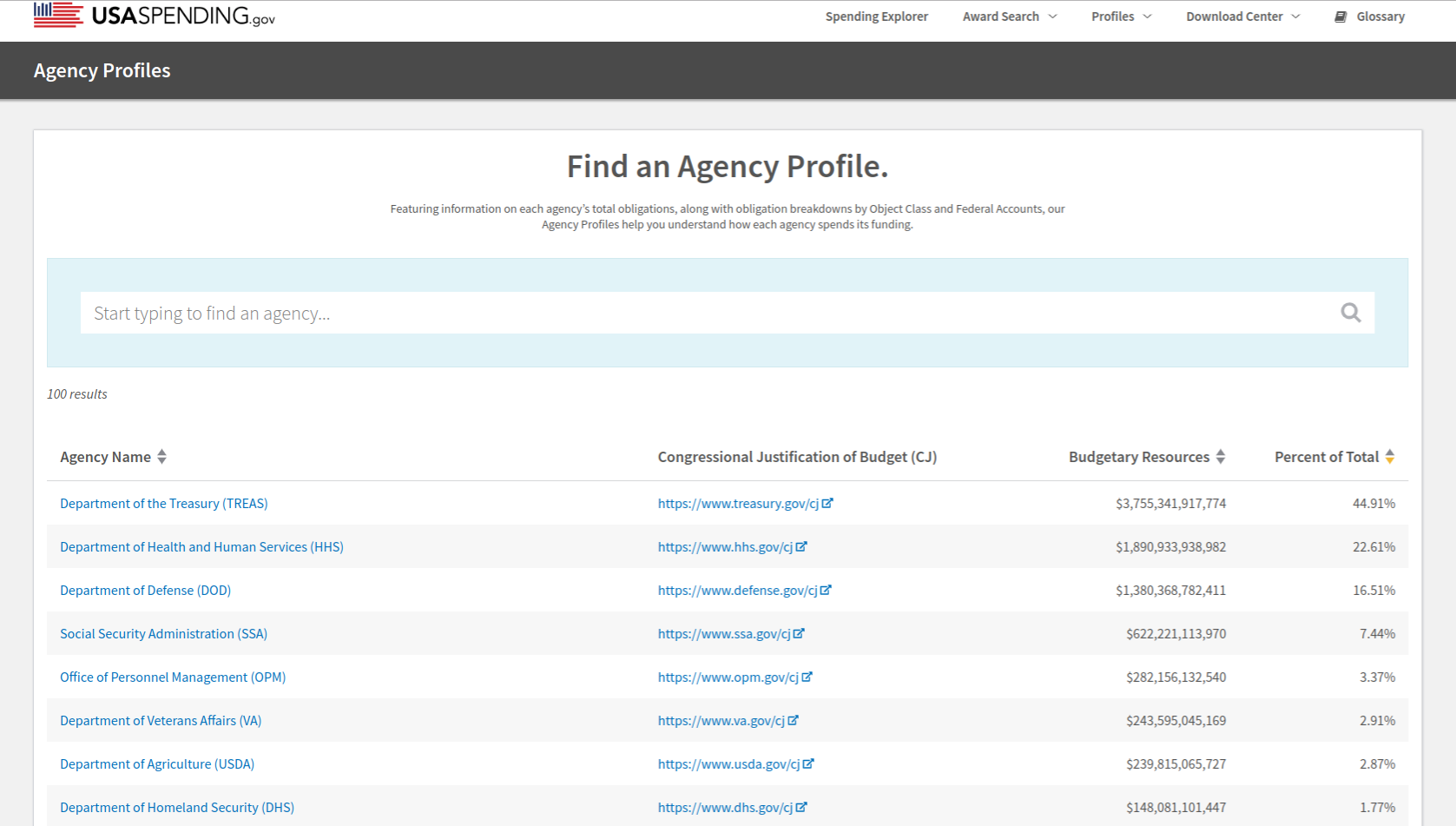After the 2008 financial collapse and subsequent stimulus, the RAT Board — Recovery Accountability and Transparency Board — was established to track itemized spending of $840 Billion disbursed by 29 federal agencies. Funding was tracked by zip code, agency, recipient, and funding category.
Tag: Executive Branch
House Budget Committee: Protect Congress’ Power of the Purse & the Rule of Law
The Article I Renaissance continued at the House Budget Committee’s hearing on Protecting Congress’ Power of the Purse. Ranking Member Womack noted budgeting is fundamental to government and that the process doesn’t work. (He noted the recommendations of the recent Joint Committee on Budget Reform failed to pass). Members and witnesses engaged in a multi-hour discussion that featured serious discussion and concrete proposals for reform.
Continue reading “House Budget Committee: Protect Congress’ Power of the Purse & the Rule of Law”
House Rules Committee: Congress Needs to Take Back Its Power
House Rules did its part to encourage the Article I Renaissance with a nearly four hour hearing and thoughtful expert testimony examining how Congress’ role has been diminished over decades, as well as how to reassert congressional authority.
Continue reading “House Rules Committee: Congress Needs to Take Back Its Power”Improving Congress and Public Access to OLC Opinions: An Update on Congressional Activity
This blogpost summarizes some recent legislative developments concerning opinions issued by the Justice Department’s Office of Legal Counsel. By way of background, OLC interprets the U.S. Constitution, federal statutes, and federal regulations. For many (but not all) matters within the executive branch, the opinions are considered authoritative. For example, the Department of Justice, as a matter of policy, will not prosecute people who violate the law so long as they are following OLC guidance, and OLC opinions are used to resolve legal disputes between agencies.
Continue reading “Improving Congress and Public Access to OLC Opinions: An Update on Congressional Activity”Sens. Peters and Portman Intro Transparency Bill for Agency Spending Plans
On Friday, Sens. Gary Peters (D-MI) and Rob Portman (R-OH) introduced legislation to make it much easier to find how federal agencies propose to spend federal funds. The Congressional Budget Justification Transparency Act of 2019 (S. 2560) requires all agencies to publish a plain language explanation of their funding proposal — known as a Congressional Justification (CJ) — online within two weeks of submitting them to Congress. Users must be able to download reports individually and in bulk, and agencies are encouraged to publish the CJs as structured data.
Currently, getting your hands on these federal spending roadmaps can be a challenge. This adds yet another hurdle to tracking federal spending, an already tricky topic. Trust us, we’ve tried. Here’s the problem: Continue reading “Sens. Peters and Portman Intro Transparency Bill for Agency Spending Plans”
The OLC SUNLIGHT Act brings much needed transparency to DOJ legal opinions
The OLC SUNLIGHT Act — which would bring desperately needed transparency and accountability to the often secret opinions of the Department of Justice’s Office of Legal Counsel — was introduced today.
How often are those opinions secret? No one knows, because there’s no publicly or congressionally-available list of all the opinions. The opinions that have become publicly available reveal that they often have undermined federal legislation and reinterpreted the Constitution in ways favorable to the executive branch and harmful to the framers’ system of checks and balances. This is intolerable.
The OLC Sunlight Act does two things —
- It requires a publicly available list of all OLC opinions, including when they are issued and a summary of the legal question presented.
- It requires OLC to publish all its final opinions online, with allowances for text to be withheld when it is properly classified, contains materials that impact privacy, and in other limited circumstances.
The original cosponsors are Reps. Matt Cartwright, (PA) Mike Quigley (IL), Zoe Lofgren (CA), Blumenauer (OR), Cardenas (CA), Carson (IN), Clay (MO), Davis (CA), Gomez (CA), Johnson, Jr. (GA), Hill (CA), Holmes Norton (DC), Phillips (MN), Raskin (MD), Tlaib (MI), and Vargas (CA). A bipartisan coalition of 17 organizations from across the political spectrum, including us, issued a letter endorsing the legislation.
Congress has long struggled to provide public and congressional transparency to OLC opinions. We are a nation of laws, not a nation of secret laws. In our system of government, Congress makes the law, not the president, and the president must faithfully execute the law.
We applaud the cosponsors for introducing the legislation. Public access to OLC opinions has long enjoyed bipartisan support, and we urge all Members of Congress to take up the fight for the rule of law.
USASpending Publishes (Some) Budget Requests In A Central Location

Every year federal agencies explain to Congress their requests for funding in a document known as a Congressional Budget Justification (CBJ). Unlike other budget documents, these requests are written to be read and understood by most people.
Hundreds of agencies and sub-agencies submit these requests and OMB requires executive branch agencies to publish their CBJs online, but there hasn’t been a ‘one-stop-shop’ government database that aggregates all the requests in one place…until now (sort of).
Continue reading “USASpending Publishes (Some) Budget Requests In A Central Location”Feds Lag in Publishing Funding Requests
Congressional Budget Justifications (CBJs) are plain-language explanations of how an agency proposes to spend money it requests that Congress appropriate, but how easy is it for congressional staff and citizens to find these documents? Demand Progress surveyed 456 federal agencies and entities for fiscal years 2018 and 2019 and found:
- 7.5 percent of the 173 agencies with congressional liaisons, i.e., 13 agencies, published their CBJs online for only FY 2018 or FY 2019, but not both. (Agencies with congressional liaison offices routinely interact with Congress). If you exclude subordinate agencies whose reports traditionally are included in a superior agency’s reports, that figure becomes 3.3 percent, or 5 agencies, out of 152 agencies published a CBJ for FY 2018 or 2019. The failure of one agency to publish their report impacts a number of sub-agencies. Among the agencies/entities inconsistent in their reporting is the Executive Office of the President, which houses the Office of Management and Budget, the National Security Council, and the Office of the Vice President.
- 6.1 percent of the 456 agencies we surveyed published their CBJs online for only FY 2018 or FY 2019, but not both. If you exclude subordinate agencies whose reports traditionally are included in a superior agency’s reports, that figure changes to 3.1 percent, or 10 agencies, out of 318 agencies published a CBJ for FY 2018 or 2019. Among the agencies/entities that inconsistently published their CBJs online are (yet again) the Executive Office of the President and the Access Board.
- 21 percent of the 456 agencies we surveyed did not publish a CBJ. This is on top of the 6.1 percent that published only one CBJ for 2018 and 2019. We do not know whether these agencies were required to publish a CBJ, or whether their justification might be aggregated under another agency that did not publish its report. Unfortunately, there is no publicly-available comprehensive list of agencies that must publish these justifications.
- All 24 CFO Act agencies — i.e., those agencies with a Chief Financial Officer created under the CFO Act — published their CBJs online.
Transparency Provisions Inside the FY18 Appropriations Law
 The recently-signed omnibus spending law contains transparency provisions intended to make our federal government just a little more open and accountable. They include: creating a hub for the reports that explain each agency’s federal spending request; a first step towards opening up federal court orders for everyone to read without charge; creating a central repository for reports by the federal Inspectors General; and making reports by the Congressional Research Service available to everyone.
The recently-signed omnibus spending law contains transparency provisions intended to make our federal government just a little more open and accountable. They include: creating a hub for the reports that explain each agency’s federal spending request; a first step towards opening up federal court orders for everyone to read without charge; creating a central repository for reports by the federal Inspectors General; and making reports by the Congressional Research Service available to everyone.
While all these measures are important, the hardest fought is public access to CRS reports. CRS provides non-partisan unbiased explanations of policy matters before Congress, and they make it easier for all of us to have conversations based on the facts.
Continue reading “Transparency Provisions Inside the FY18 Appropriations Law”
The 2017 #OpenGov National Action Plan

Starting in 2011 and every two years afterward, the White House has drawn up an open government national action plan that is intended to contain specific, measurable open government commitments. The planning process is an outgrowth of the Obama administration’s open government initiative, which kicked off in 2009 when agencies were first required to create open government plans, but takes place on an international scale.
The Trump administration said it will continue this process and is collecting recommendations for the 2017 plan. (More explanation via the Sunlight Foundation.)
While we were heartened to see the Obama administration adopt one of our recommendations — a machine readable government organization chart — most of the other ideas were not put into action. We reiterate and update them here and call on Congress to require the administration to put them into effect. In summary, they are: